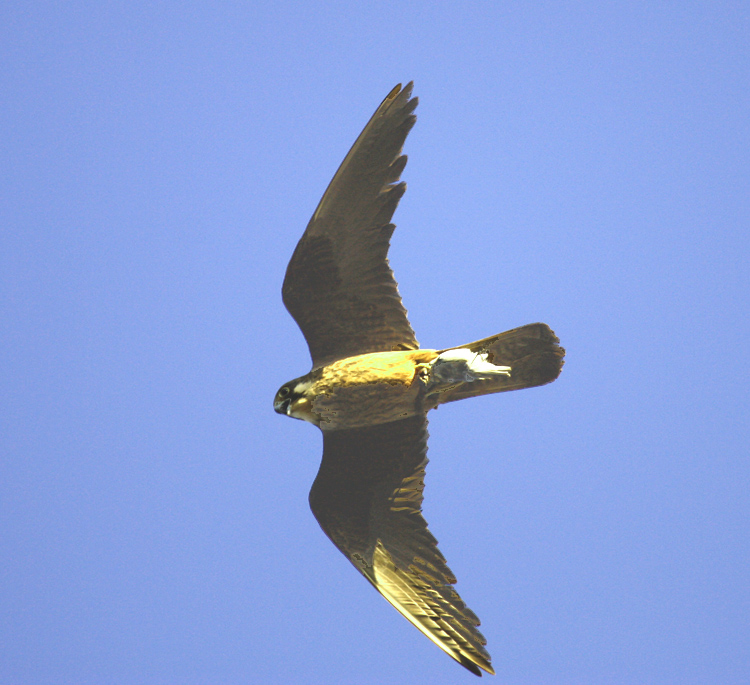Large-scale environmental forces can influence biodiversity at different levels of biological organization. Climate, in particular, is often associated with species distributions and diversity gradients. However, its mechanistic link to population dynamics is still poorly understood. Here, the full mechanistic path by which a climatic driver, the Atlantic trade winds, determines the viability of a bird population is unravelled. The breeding population of Eleonora's falcons in the Canary Islands was monitored for over a decade (2007–2017), and different methods and data to reconstruct how the availability of their prey (migratory birds) is regulated by trade winds were integrated. GPS allowed tracking foraging movements of breeding adults, weather radar was used to monitor departure of migratory birds, and an individual-based, spatially explicit model simulated their migration trajectories. Results demonstrate that regional easterly winds regulate the flux of migratory birds that is available to hunting falcons, determining food availability for their chicks and consequent breeding success. By reconstructing how migratory birds are pushed towards the Canary Islands by trade winds, most of the variation (up to 86%) in annual productivity for over a decade is explained. This study unequivocally illustrates how a climatic driver can influence local-scale demographic processes while providing novel evidence of wind as a major determinant of population fitness in a top predator. informacion[at]ebd.csic.es: Gangoso et al (2020) Cascading effects of climate variability on the breeding success of an edge population of an apex predator. J Anim Ecol https://doi.org/10.1111/1365-2656.13304
https://besjournals.onlinelibrary.wiley.com/doi/full/10.1111/1365-2656.13304








 Las altas temperaturas están provocando que las lagunas y las marismas de Doñana pierdan agua rápidamente
Las altas temperaturas están provocando que las lagunas y las marismas de Doñana pierdan agua rápidamente



